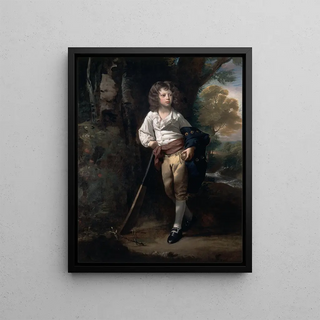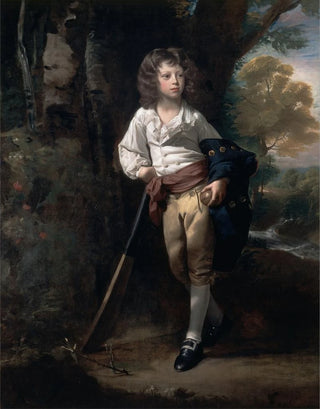Art print | Richard Heber - John Singleton Copley


View from behind

Frame (optional)
Richard Heber art print - John Singleton Copley – Captivating introduction
The Richard Heber art print by John Singleton Copley immerses us in a universe where reality and art intersect with rare intensity. This iconic piece, created by one of the masters of 18th-century portraiture, invites us to explore not only the face of Richard Heber, a passionate bibliophile, but also the very essence of an era where culture and knowledge were celebrated. Copley, as an artist, does not merely capture his subject’s physical appearance; he succeeds in conveying a psychological depth that makes each gaze, each gesture, imbued with meaning.
Style and uniqueness of the work
Copley’s style is distinguished by his ability to blend realism and classicism, creating an atmosphere that is both intimate and majestic. In this piece, the subtle play of light and shadow accentuates Heber’s features, while highlighting the refined details of his attire. The texture of the fabrics, the rendering of accessories, and even the expression on his face demonstrate impressive technical mastery. Copley does not just paint a portrait; he tells a story, that of a man whose passion for books and knowledge shines through every brushstroke. This approach gives the work a singularity that sets it apart among portraits of its time, making Richard Heber a timeless figure, both rooted in his era and universal in his humanity.
The artist and his influence
John Singleton Copley, born in Boston in 1738, is often regarded as one of the pioneers of American portraiture. His career, marked by works that combine deep psychological sensitivity with impeccable technique, paved the way for many artists. Copley captured the spirit of the times, reflecting the aspirations and values of American colonial society. His influence extends beyond the borders of the United States; it reaches Europe, where his works have been admired and copied. Through his portraits, he contributed to establishing a cultural identity that foreshadows the development of American art in the 19th century. By paying tribute to intellectual figures like Richard Heber, Copley also participated in the valorization of

Matte finish

View from behind

Frame (optional)
Richard Heber art print - John Singleton Copley – Captivating introduction
The Richard Heber art print by John Singleton Copley immerses us in a universe where reality and art intersect with rare intensity. This iconic piece, created by one of the masters of 18th-century portraiture, invites us to explore not only the face of Richard Heber, a passionate bibliophile, but also the very essence of an era where culture and knowledge were celebrated. Copley, as an artist, does not merely capture his subject’s physical appearance; he succeeds in conveying a psychological depth that makes each gaze, each gesture, imbued with meaning.
Style and uniqueness of the work
Copley’s style is distinguished by his ability to blend realism and classicism, creating an atmosphere that is both intimate and majestic. In this piece, the subtle play of light and shadow accentuates Heber’s features, while highlighting the refined details of his attire. The texture of the fabrics, the rendering of accessories, and even the expression on his face demonstrate impressive technical mastery. Copley does not just paint a portrait; he tells a story, that of a man whose passion for books and knowledge shines through every brushstroke. This approach gives the work a singularity that sets it apart among portraits of its time, making Richard Heber a timeless figure, both rooted in his era and universal in his humanity.
The artist and his influence
John Singleton Copley, born in Boston in 1738, is often regarded as one of the pioneers of American portraiture. His career, marked by works that combine deep psychological sensitivity with impeccable technique, paved the way for many artists. Copley captured the spirit of the times, reflecting the aspirations and values of American colonial society. His influence extends beyond the borders of the United States; it reaches Europe, where his works have been admired and copied. Through his portraits, he contributed to establishing a cultural identity that foreshadows the development of American art in the 19th century. By paying tribute to intellectual figures like Richard Heber, Copley also participated in the valorization of






